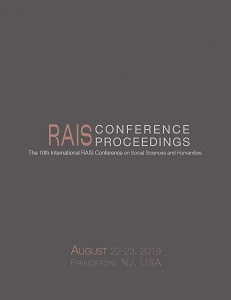Capitalism Crowding out Fertility
Capitalism Crowding out Fertility
Author(s): Julia M. Puaschunder
Subject(s): Economic development, Socio-Economic Research
Published by: Scientia Moralitas Research Institute
Keywords: Artificial intelligence; Business freedom; Capitalism; Capitalism-Fertility Index; Economic Freedom Index; Ethics; Fiscal health; Foreign Direct Investment;
Summary/Abstract: ABSTRACT: In a realm of literature on influence factors on fertility rates; this paper innovatively introduces capitalism being associated with lowered fertility rates. Based on a 180 country strong worldwide data set and cross sectional correlation studies, this paper outlines that hallmark pillars of capitalism are all negatively associated with fertility rates. The 2017 Economic Freedom Index – comprising of input variables such as property rights protection, judicial effectiveness, government integrity, fiscal health, freedom of business, labor, monetary policy, trade, investment, finance, taxation, GDP freedoms as well as FDI inflows – is significantly negatively correlated with fertility rates around the globe. Based on a 139 country strong worldwide dataset on industrialization as measured by the UNIDO in the Industrialization Intensity Index of 2014 and fertility rates, a highly significant negative relation is found between industrialization and fertility rates around the world. Urban areas around the world tend to have higher fertility rates and access to markets within rural communities lowers fertility rates measured by the World Bank Rural Access Index for 64 countries around the world. The inverse relation of economic freedom and fertility was also found for 50 U.S. states based on the 2017 Economic Freedom Index and fertility rates in the United States. The historic examples of communism imploding giving way to free market mechanisms but also an Islamic regime changing towards a Western free market approach captures capitalism to crowd out fertility in a meta-analysis, which also finds higher education levels not being stringently related to fertility rates. Industrialization, globalization and capitalism lead to vanishing populations. Being occupied by production and consumption but also the entertainment of capitalist markets, economic mobility and international trade may distract societies to prosper regarding fertility. Focus on competing in markets may hinder from procreation. Equilibria und markets may have an undocumented negative effect on fertility. Unruled capitalism may lead to a falling rate of fertility, decimating the populace and eventually also the reserve pool of economic agents. The paper concludes with proposals how to use these novel insights as (1) birth control mechanism in those parts of the world, where overpopulation is currently demanding governments to find ways how to lower the fertility rate and (2) means to avert the falling rate of fertility in capitalist societies with a shrinking, aging population. Infusing capitalistic market freedoms in birth control needed territories but also taxing capitalist activities to fund parenthood through direct investment in social benefits and/or via subsidized parenthood to alleviate the tendency of the falling rate of fertility in the eye of capitalism is recommended concurrently, depending on the starting level on the overpopulation-low capitalism versus under-reproduction-high-capitalism spectrum. Revealing the found mechanism has also implications for advocacy to strengthen fertility and the intergenerational glue in light of vanishing populations in the Western world. In addition, the findings have innovative and futuristic prospects in the age of artificial intelligence. Robotics and artificial intelligence slowly taking over human capital labor activities but not being able to reproduce a human DNA is argued to increase the future value of humanness – and with that human fertility – in the artificial age.
Book: Proceedings of the 10th International RAIS Conference on Social Sciences and Humanities
- Page Range: 138-141
- Page Count: 4
- Publication Year: 2018
- Language: English
- Content File-PDF

